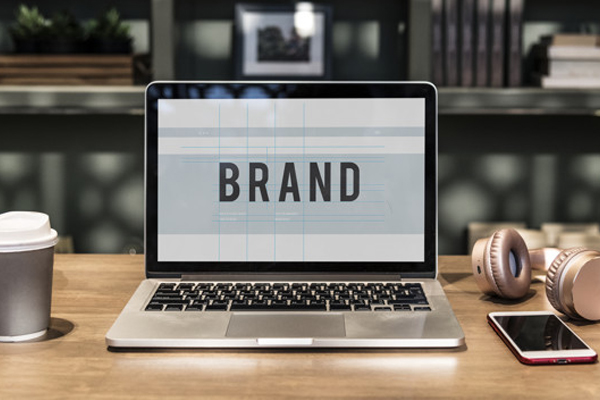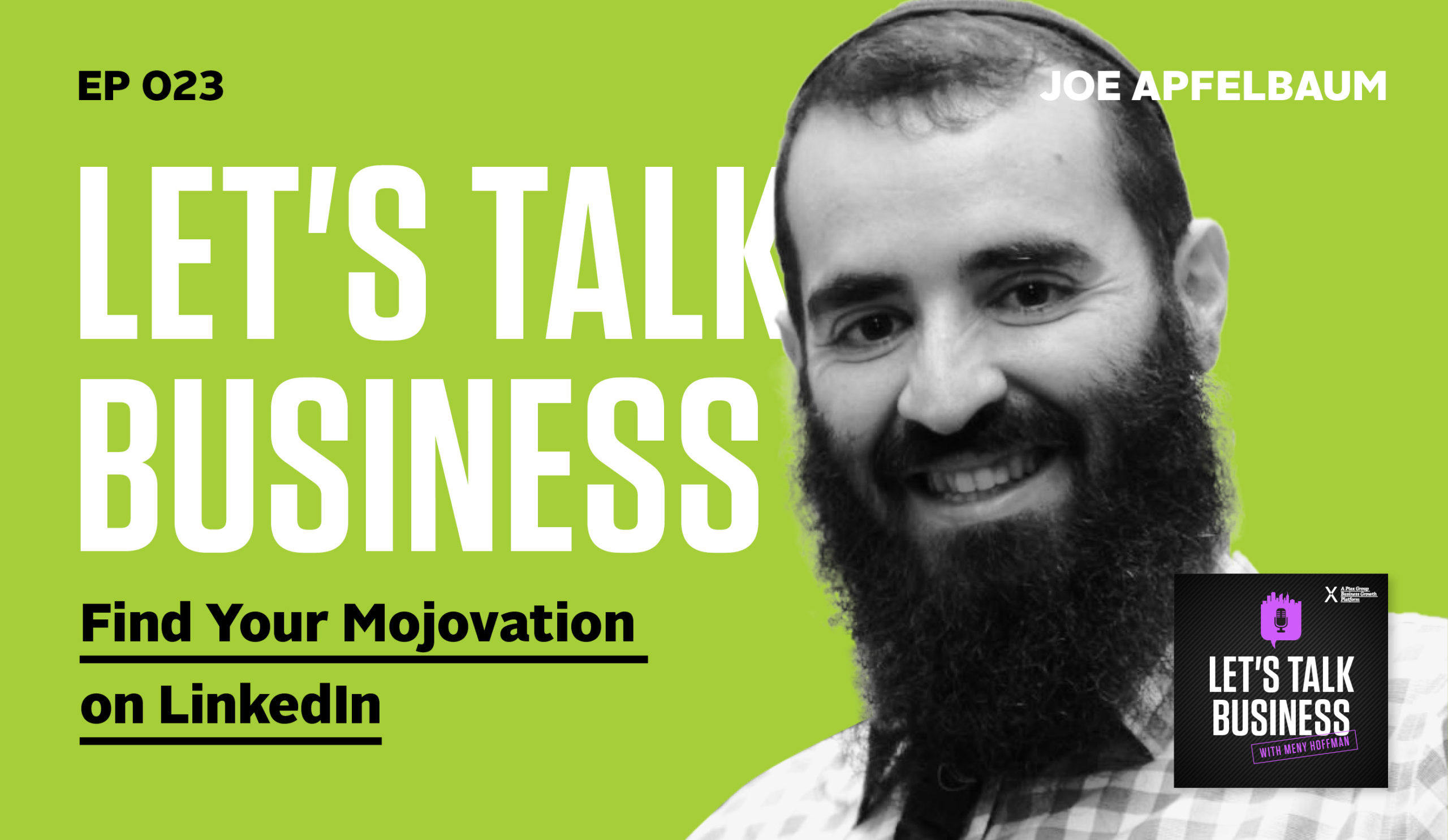Amazon brand developer, Isaac Kuhlman, shares how you can build a brand that will lead you to achieve breakthrough growth in Amazon.
Listen to the podcast here:
Download the audio file here.
How to Achieve Breakthrough Growth as an Amazon Brand—with Isaac Kuhlman
Isaac, thank you for joining me on the show.
Thanks, Meny, for having me.
People following the show on a regular basis know that one of the regular services of Ptex that we do quite well is working with Amazon sellers. We like to call them private label sellers or people that own brand, and the distribution channels on Amazon. When we crossed paths and I saw what you were doing, I figured let’s bring you on the show and let’s share some of the latest tips and tricks, and also the fundamentals for business owners selling on Amazon. Thank you so much for joining me.
This is going to work out great. After knowing a little bit about your business, I think there’s a lot of synergy between the two of us.
For our readers, I like to give them a bit of a background. They know by now you’ve helped over thousands of Amazon sellers grow their businesses. There is some passion behind it. There’s some background behind it. Let’s start a little bit of that.
If it wasn’t something me and my partner Kirsty wanted to do, coaching and helping people wouldn’t be as big of a focus for us, but it is one of our big passions. We both have our own Amazon businesses and everybody that we have as coaches in our business also have their own Amazon businesses. The idea was a few years ago, I started selling on Amazon, at the time working with another guy named Paul. We were growing big brands like multiple millions of dollars at the time and turning over $5-plus million a year. There were lots of learning, hurdles and stumbling blocks. I remember one time I messed up on an account where this product was doing about $9,000 a day on Amazon. It was almost a $250,000 in a month. I messed it up, lost all of its ranking, lost all of its reviews. I ruined that product. It was a big learning lesson. I call it the $250,000 mistake I made on Amazon.
There are definitely hurdles and learning. That’s the one thing we strive. Kirsty and I spent a lot of time helping people for free when we were learning our processes and people were helping us. Every time we seem to spend more time with somebody to try to help them, it seemed they didn’t ever accomplish anything or follow through with anything. We learned pretty quickly after talking with a few mentors that the idea is they have to have some skin in the game. They have to have some passion. They are not going to take free advice as well as they’re going to take advice that they paid for. That started resonating with us. I always say this to people, I have a whole bookshelf of books. Probably half of them are given to me for free from entrepreneurs or businesspeople and the other half I bought. I’ve read less than one hand’s worth of those free books, but I’ve read all the ones I’ve paid for.
[bctt tweet=”There’s a lot of products out there that you might not want to sell, but people are buying.” via=”no”]
It is very similar to that in the sense that we’re not doing it for the money, we’re doing it to get the results. I’ve always had this passion, even when I was in college, I wanted to start some foundation or some business where you help the next person get the opportunity that you’ve had. If you’ve worked hard, you get an opportunity, make it work, turn it around and help the next person get that as well. Me and Kirsty met in 2015. We had the same mindset and we were doing the same stuff. Seeing the exact same lack of results from helping people for free, we set out to design something that will get great results. It’s a paid consultation type of mentoring process but in the end, we started getting the results that we wanted for people. By that, we mean people living on their Amazon business alone, not working for anybody else, just working for themselves.
We had one client who paid off $250,000 debt in about nine months, which was insane. I only say that because that was his goal was to do that. We had another guy who took his family around the world for an entire year and he has five kids, four of them went on the trip with him and his wife. They spent three months in Italy, and they were taking their kids to Italian schools while they’re there. It’s some crazy life-changing stuff. That became a passion. Now that we saw it was going to work, we were dead set. We want to do this and we want to get these kinds of results for many more people. It’s one of those things where you get a little bit of opportunity, a little bit of experience, you turn it around and help the next person up. You probably share some of that. Otherwise, you wouldn’t be doing that exact same thing as well.
You touched on so many different parts where we could take this conversation. We’ll try to cover as many angles as we could. I want to get to mentorship later. I think it’s an important fact to what you mentioned, paid mentorship versus free mentorship and taking action. I want to start first about the topic of Amazon. Amazon now is not what it used to be a few years ago and it keeps on changing on a regular basis. From what you’re seeing, is it still a viable business for somebody that’s looking to, not so much for the freedom of Amazon but build a business around it?
That’s a core principle that we’ve followed. It’s not about selling some products. It’s about building a business. You can start a business doing anything. You can start real estate, franchise or anything. For the money or the investment that it takes to build a business on Amazon, it’s a lot more accessible for a lot of people. A lot of people think it’s too overcrowded or too saturated. There are too many people. There are too many bigger companies coming in. What we found is if you look in the right places, there’s absolutely the best time to keep selling on Amazon. I’ve even launched a brand-new brand. It’s totally separate from my original brand, my seller account and everything. I’m already seeing great results and I can update that further as it goes along in time. The idea here is that you can find things around a brand, build that brand, build that business up, get some products under it.
One of the tips I can give and it seems very obvious, but a lot of people don’t want to listen to this advice. There are a lot of products out there that you might not want to sell because you don’t want to sell it, but people are buying it. What I mean by that is there are lots of accessories to things. People want to sell the thing, whatever the cool thing is, the sexy product as they call it. A lot of people get into baby. They want to sell the diaper bag that’s $70. What about all the stuff that goes in the diaper bag? Some of those things sell better than the diaper bags. You’re not even looking at it because you want to sell this cool, sexy $80 product. There are lots of stuff in there and there’s even other stuff that goes to accessories, other kinds of stuff for baby that people don’t even look at because they’re like, “It’s not the cool product.”
You can fill a brand up. If you’re thinking about an Amazon business, most people don’t necessarily want to grow a $10 million or $15 million business. They want to grow business to get $5,000, $6,000, $7,000, $8,000, $9,000, $10,000 in income per month so they can live as free as they want. With about 5 to 10 products on Amazon, and if you cleverly pick them and cleverly market them, and do things the right way, process by process, strategy by strategy, you can have $1-plus million business from 5 to 10 products easily. That’s what we’re trying to strive for people to see. It’s not about selling one product and get 100 units a day. It’s about selling a string of products that get 20, 30, 40 sales a day or whatever, and get that process out there, build this brand and have a very valuable business that you can live off of. If you want to, you can sell a business later to a bigger brand or whatever you want to do.
Let’s give some practical advice for our readers who are thinking this might be the next gig where they start getting into the space, building their brand. When you’re doing product research, there are some great tools out there. People move a lot of products, but don’t stay with a lot of money. We see a lot of people moving, importing, selling a lot, and then not staying with the proper margins. What is the base that you’re looking for when you’re looking at a product in order to see, “Is this a product that might be my next winner?”

We’ve got a couple of different criteria that we ideally like to see. It can be a little bit lower or a little bit higher. It doesn’t have to be perfect, but we’re looking for profit margins around 35%. We also look at ROI of about 150%. ROI is obviously Return on Investment. Meaning, for every dollar you put in, you’re getting $2.50 back. Take that $1 out, so you get an extra $1.50 of return. The idea here is that we’ve got those two criteria, but then we also look at how much cash it brings in on a monthly basis for both sales and profit. Meaning if your goal is to hit a $5,000 a month income goal, you probably need about $10,000 a month in profit because you’re not going to take all that in profit. You’re going to probably split that 50/50 or 30/70, or something like that between the business and your income.
We reverse engineer it from what’s our income goal. Is it $5,000 or $10,000 a month? Look at the products that can get us there based on research that we show people how to do. We also look at, what’s your budget. This is a big one that people always forget because they don’t think about how much the ads cost. They don’t think about how much the budget cost of launching the product because you still have to market it. You might have to do some promotional units or whatever to get big on Amazon so you can get visibility. What we do is we have everything laid out in one of our spreadsheets. We call it our product analyzer bible. We lay everything out and do all the best guess or the best estimates that we can get on that spreadsheet.
It’s based on research from lots of different things that we have in excess to tools that we have. Let’s say our budget is $8,000 for a product, that’s going to be included with a cost of goods and also, with the launch cost. Can you afford that? If you do all the numbers and you see that the competition is not insanely high, can you afford to launch that product and sell it? Great, then let’s look at your profit margins, your ROI, how much money it brings in, how much is the first order cost, all that good stuff. That way, you can understand that you can prioritize these things 1 through 5. If you’ve got twenty things on the list, you want to know which ones you’re going to launch 1st, 2nd, 3rd, 4th.
We say launch one at a time because if you say, “I only got $8,000 to launch a product,” if you try to launch two right away, then you’re at least somewhat doubling that because you’re going to launch a second product. You’re also not going to have the focus and effort, and all that stuff. We want people to understand that like any business, you have to understand your costs, ongoing expenses, launch and marketing costs even before you order the product. It’s like if you’re opening a restaurant, you’d want to know the marketing budget to open that restaurant. You would open it and then go, “Now what?” That’s what we do on Amazon. We look at the entire business before we even order anything from the factory.
What you mentioned is so true because sometimes you speak to entrepreneurs and they’re about to bring in the product or maybe the product is already here. They made a spreadsheet based on they think they added value to the product and they want to sell it let’s say for $29.99. Mainly the competition is selling it for $22.99, which means their profit margins is based on the price that they want to get. They don’t understand that either it takes time to build it up to that price point, or they need to leave room in case they cannot get the full $29.99. If they don’t have those margins, they’re losing on every product that they’re selling.
We tell people there’s this idea and concept of bundling stuff together to add value, perceived value to a product. Add a little knick-knack here to that thing or whatever, double it up and do multi-packs. Sometimes multi-packs are okay, but bundling an extra product on something might not even be a great idea because a customer types in the search bar for exactly what they’re looking for. They are not looking for that thing plus another thing. They’re looking for that thing. Maybe it’s a hammer or whatever. They don’t want hammer and a ten-pack of nails. They want just a hammer. Why are you adding the ten pack of nails in there as a bonus when they’re not looking for that? They want the best hammer at the best value.
When they see you raised higher than all the competition, they’re going, “I don’t need the nails. I’m going to buy this better-looking hammer or this good-looking hammer for $4 less.” It’s a lot of wishful thinking when people try to add that perceived value. They’ll do excess packaging and over-packaging and this luxury packaging on products, “I don’t need it.” Why did you do that? You added $1 cost to your product and all you did was increase your sales price, because your margin still has to be there. Otherwise, you shouldn’t sell the product. Now they are selling for a lot less. They are not competitive and they’re not getting traction. Customers aren’t buying them and reviewing them as much.
[bctt tweet=”A lot of people don’t know what they want to sell or what they want to be known for.” via=”no”]
Let’s talk about the topic of people launching a brand. This is something that I’ve heard so many times on different people. I would love to get your take. Like everything Amazon, speak to five people and you get five ideas or maybe more. There is something when people start off and says, “I can build a brand because I’m not even sure which product I want to bring in. I don’t want to lock myself into one category. I want to bring in five products in totally different categories, different price points and see what sticks and then figure it out later.” How risky is that or how clever is that? What is the benefit of a brand in general?
A lot of people don’t know what they want to sell or what they want to be known for. The first thing we have to establish is that your brand is your reputation online. It’s what you stand for, what your company stands for and what your products stand for under that brand. We know that the brand is essentially your voice personified through your products and through your company. This is where you can feel good about the products that you sell. Whereas if you sell disparate products, you just want the money. It’s a money thing like, “Get them selling.” There are two things about selling things for money that I always say. It’s from Tony Hsieh from Zappos. It’s his quote. One of them is, “Don’t follow the money, follow the dream. If you do what you love, then the money will follow.” I’m paraphrasing. I don’t remember the quote off the top of my head, but it’s something like that.
The idea there is that if you’re passionate about something, do that. Be good at that and focus at that. Especially, if you have the knowledge and experience of that, then it’s going to be a much better business model than saying, “Let’s look for things that make me money.” There are a lot of people that just want to make money, and that’s totally fine. There’s nothing wrong with that, but the idea here is that you can build a better business based on something you’re passionate about. We say the first thing you’re looking at when you’re building a brand is find your passion, build something around an interest that you have, especially if you have experience and you know the products. If you’re the ideal client or the ideal customer target market, you’re going to be more inclined and more experienced and have more knowledge than most of your competitors.
If you think about big brands, when they first started out, they only did one thing. Nike only sold running shoes, Apple only sold computers, McDonald’s only sold hamburgers and French fries. This is what they were known for. They spent years growing just on those things. People want to jump past that and start ten brands or wants ten different products and ten different things. Nike didn’t even sell apparel until the ‘80s. It was a while before they branched off. The idea here is if it works for big, great companies, why wouldn’t it work for you? Here’s the even better part. Now that these big, great companies out there are known for spreading out their thing, and I’m not saying you’re going to sell shoes against Nike. That’s unrealistic. There are some brands out there that sell things that they’re not necessarily as knowledgeable about and especially brands on Amazon because they’re brands. They’re not even brands that are like XYZ studio or something like that, just some random name brand.
You can connect to your audience on Amazon because as long as you get that visibility, people can look at your listing. They can read what you say and they understand that you know what you’re talking about and speaking to the customer like they want to be spoken to. They will buy from you because that brand that you represent is standing for something that everybody else on Amazon is not. They don’t try to reach the customer in the way that you could. It’s a big branding process. It’s worked for big companies for at least 50 to 60 years. It works for Amazon even better because all you need to do is get next to them on the shelf. It would be like when you go into a grocery store or Target, for example. You see ibuprofen, the generic one, then you got the Advil. Some people buy the one that’s $2 less, but a lot of people trust Advil because it looks nicer. It’s in a box, not just in a bottle on the shelf. It has some nice graphics and does some advertising.
It’s the same thing on Amazon. The difference is that all you’ve got to do is look a little bit better than the top competitors like listings, for example, where most of the big brands don’t know that they’re on Amazon or if they are being sold on Amazon or it’s by Amazon. It’s not a big part of their business model to represent big brands the right way. They’re not a marketing firm per se, they are a selling factory. If you know how to market a little bit better, speak to the ideal customer, you can beat big brands on Amazon. You’re not going to sell shoes against Nike probably. You’re not going to sell ibuprofen against Advil, but there are a lot of brands out there that you can sell better than even Amazon themselves like AmazonBasics. I compete against them and outsell them regularly.
I’ll take it even a step further. Sometimes you speak to people and all you want to do is figure out the algorithm and how to rank and beat the competition that way, which to a certain extent is important. For the bigger picture, for the longer run, that’s a game that is never ending. There’s always somebody smarter and somebody figuring out another hack and trying to outsmart you. If you build a brand, which means somebody gains that trust factor. If they don’t like that particular product, they go into your storefront and see what else do you have in this category versus getting into a product and they are going into the storefront. All of a sudden, they’re seeing all kinds of products and seeing that you’re jack of all trades. It loses that trust factor. They’re going back to the homepage and start all over again.

We call the branding part a moat for your business. It surrounds your business from being attacked in a lot of ways. A lot of people out there, they want to hack the system. They want to manipulate Amazon’s rankings and reviews system and all that stuff. There are lots of people out there that do that. Not only do their businesses get knocked down repeatedly. I know because I’ve known people that do this. They constantly struggle to get their accounts back or get their listings back up. They repeatedly have to go through this process. If you’re doing things the right way, you don’t have to worry about that. All you need to worry about is keeping your inventory in stock and keeping your ranking. If you’re playing the PPC, which is the Amazon ads and you’re playing the search ranking. When someone searches on a term, are you the first one that shows up or the tenth one that shows up? The closer to the top, the better.
You focus on your metrics and all the key things that our business would do, not trying to manipulate things in ways that aren’t going to last long, because Amazon is going to snuff them out eventually. Amazon is pretty clever when they have their AI looking for manipulations all over Amazon. They know who your friends are and can find out like, “Did a friend of yours review a product?” They can send you a message saying, “Don’t do this, here’s a warning.” They know a lot and their AI is pretty good. The more you try these hacks, and some people are very high risks. They’re like, “I don’t care. I’m going to push all in,” but then 3, 6, 9 months later, they’re going to have a massive issue with Amazon. The brand has that security blanket around that stuff if you do things the right way. You build that trust and build that business instead of the hack system.
I want to ask you the following question. For the readers out there selling on Amazon, we know right from the top, Amazon with all the different fees that are associated with it and it’s close to 50% that gets off the top line. If somebody wants to take action now, where would be the places where they should check to see if they could tighten up their margins and get the most out of their business?
I’d say probably the first two things they would do is work with their suppliers and this is something that people neglect doing because they got a price once, and then they are okay with that. If you work on your supplier, what you need to do is build a long-term plan of how many units you’re going to sell over a certain amount of time. If you start changing some things like, “I’m going to start going hard on my ranking so that way I can get more sales. I want to make sure that I’m getting more reviews so I get more sales,” whatever that strategy is, then you build out an annual sales plan. This is something that almost nobody does. We 100% do this with everybody we work with because they have to understand that you need to plan ahead.
You need to understand where your cash is going, what time it’s going out, and how to build a business around that, but then you can turn around and say, “Supplier, I’m looking to get maybe 15,000 units this year. I would like to get a 15,000-unit price on my goods because here’s the plan. If you give me that 15,000-unit price now for every order for the year, then I’ll place 3 or 4 orders in a year. What we can do is we can sell it for a lower price and then we can increase our volume on Amazon. If we can lower our price and you help us do that, then what we can do is turn around and sell more together so this 15,000 is based on that.”
You can give them that plan, and then another thing you can do is work with them on what we call payment terms. For example, most factories will say, “You’ve got to pay a 30% deposit upfront and then when the goods are completed before it ships out of China, you pay the 70% remaining balance.” What we like to do is turn around and use that payment terms as a cashflow stretcher. It’s like working with a bank almost. We say, “You pay a 30% deposit, then on completion you pay 40% more.” You got 70% of the order paid, and then 30 or 45 days later, because it takes time to ship, after this product is already selling, you can then say, “I want net 60 or net 45 on the last 30%. That way, I can make sure that my cashflow is flowing well.” A lot of suppliers, if you work with them on this and make them understand that this is a win-win situation, they’ll come to the table and work with you on that stuff. That not only helps your margin, but it also helps your cashflow. Cashflow is a secret that nobody wants to talk about.
There are lots of people making million dollars of sales a month, but their cashflow is so strained that the action isn’t making income, which is crazy. You have to know where your cash is going, when it’s coming in, when it’s going out. You can’t be growing exponentially without understanding how much money you have left in the bank. A lot of this stuff is not anything new or surprising. Once you run that business for a while, you’re scratching your head and going, “Where’s all the cash at?” Either you’ve grown too fast or you’re not getting the right payment terms, or your disbursements aren’t coming fast enough from Amazon. You’re behind the eight ball on that and you don’t understand that this is a business model as opposed to, “Let’s sell some stuff on eBay or at a garage sale.” You need to think about it in terms of cashflow.
[bctt tweet=”The brand is essentially your voice personified through your products and through your company.” via=”no”]
I’ll add for the readers on the topic of negotiations with your vendors. First of all, keep in mind the first time you placed an order, you were trying to source the product and you needed all the help. Once you are established and you know a little bit of projections of what you’re planning to sell, you should have a little bit more leverage. What I see a lot of people not doing or doing and succeeding is while you’re selling, never be relying on one vendor. Even if you are placing orders with one vendor, but also have a backup plan. You now have a real business. Figure out what is the market selling this product for? You have a structure. You have your packaging. You know exactly how you want it shipped. You use it to your leverage and your advantage when you negotiate with your vendor saying that, “For the larger quantity, I’ve gotten better pricing and we got to negotiate. We got to be able to be at this price point that we need to be.” That’s one point I would add.
The other point I would add based on what you mentioned about the payment terms, what even manufacturers like is if you could tell them that if you’re not asking us a 30%, we’ll give you more frequent POs, which means you don’t have to get it maybe only three times a year and they would push everything in one month. If you’re not asking us for a lot of money as a deposit, we might give you monthly POs or every second month PO, where you could flow your production better. A lot of those manufacturers love that.
Because then they know that it’s ongoing. There are no strict contracts that can be upheld between you and a supplier because it’s weird to do that. If you have a very good agreement and understanding with your supplier, they’ll help you out. You can’t just go in there and try to say, “I want to win this negotiation.” It has to be a win-win. It has to be good for them. It has to be good for you. Otherwise, they’re going to say no and that’s it.
When we speak about inventory, I know that cash is always an issue and you see the ups and downs. You could see a product starting to pick up on Amazon. It’s very successful and all of a sudden, you’re putting in a larger PO all of the time. The goods arrive and it’s not at that spike anymore. When you have a traditional business, you get POs from customers or you know your flow of sales, and so on and so forth. Most of the stuff is unpredictable because you’re not controlling anything on that side. How do you go about that to make sure that you don’t have access inventory, and then you stay with inventory? What could you predict? What can’t you predict? There’s always that part that’s unknown, but based on the teaching that you do for your clients.
It’s not entirely predictable. No sales forecast is 100% right. Even big companies that spend millions of dollars on getting their sales forecast. COVID-19 messed up a ton of people’s sales forecast, either good or bad. It’s always going to have its ups and downs. The idea here is that there are tools out there that help you understand what the competition has done. You can see what your last year’s sales are if you’ve already established them and selling for a year. You can use these kinds of strategies and you can look at what are your top sellers doing on that page. Are you 1/5 of theirs? Do you get a ratio of 1/5 of their sales? Have you seen them get sales in the past? You can use tools that show sales history.
It gives you an idea. You might get stuck with some inventory after quarter four, for example. Christmas time is over. You might have some excess inventory leftover in January, but then Chinese New Year comes around and you can’t order more inventory so that lasts you through March anyway. It’s sometimes not as big of a deal as being undercut, shorting your own inventory, because then you’re missing sales, then you’re losing your ranking, and then you’re losing the opportunity of being one of the top sellers. Trust me, that is a recurring issue with even the top sellers. Even the best and most accurate inventory orders, you’re still going to have inventory issues. However, we do have inventory planning systems that you put in your lead times in. You’re putting the shipping times. You’re putting the daily sales estimated like if it’s going to raise like, “Do you think the next two weeks it’s going to raise in sales or what?”
We have a spreadsheet that works this all out for you. You just got to put it in a couple of numbers. It is one of those things that if you have people that are working this business already and understand their systems and processes to estimate as best as you possibly can, that’s a lot better than going in there with your finger pointed up in the air like you’re testing the wind and go, “I’ll get 10,000.” You have to base that on some estimates. It might not be 100% accurate, but it’s going to be more accurate than over-ordering or under-ordering and then saying, “This is it.” It does come down to cashflow too. You have to understand, if you need 10,000 units, “Do I have to break these up into two 5,000-unit orders because I can’t pay for all this all at once.”

Let’s speak about the global pandemic. Unfortunately, that hit up people a lot in every part of their life. For eCommerce sellers, it had a spike because people are in a lockdown. People were not going through retail and online sales, either from general people buying online or a lot of people adapted to online shopping. What have you seen and how could business owners or Amazon sellers adapt best to based on the new norm?
About 75% or so, all of the sub-categories on Amazon seem to have got a lift. Amazon released some numbers, and I don’t remember them all exactly. There were only 3 or 4 major categories that sold less during the second quarter of 2020, which was surprising because the rest were 100%, 200%, 300% increase. It’s massive. I think Amazon gained $40 billion worth of value in three months or something, which is a lot of money. The idea here is that it is focusing more people onto online shopping. Now you’ve got bigger opportunity for more sales, but that means that people are always going to try to compete more. What you need to understand is how to get a competitive advantage. Every time that something happens in the world, you need to find a way to zig when somebody zags. That way, you can have that slightly competitive advantage.
This is where like what we’ve been talking about, all these systems, all these strategies, branding, finding the right products, maybe not selling the thing that everybody wants to sell, sell something that goes with it, or that’s an accessory or whatever. All these things can help you because people are buying even the most mundane things on Amazon. For example, people buy auto parts on Amazon because they don’t want to go down to the store and buy those things. Not a lot of people are selling auto parts on Amazon. I know because I’m in the automotive accessory space. I don’t sell parts, but I sell accessories. Every once in a while, I’ll go on there and look around and I’m like, “These things are selling well.”
Air filters and random stuff like that. There are people, third-party reselling major brands, but it’s not a new brand coming out and selling on Amazon. It’s not a third-party seller like us building a brand. There are lots of things out there that are super interesting and sell well, but people don’t think about it. Whether that’s your passion or not, I’m not saying go out and sell auto parts. I’m just giving an example. There are lots of things out there. One thing that has happened, which is probably the craziest thing I’ve seen as far as when you’re working with a logistics company, but Amazon has restricted the amount of inventory every single product can have in their warehouse. For new products, you can only have 200 units in there. This has been a big concern for a lot of Amazon sellers.
We’re working with our members and we’ve talked about this on our podcast and stuff and give people some advice about, how do you work around this? What are the top tips? You will have to find a third-party warehouse that does FBM, which is Fulfilled by Merchant, which means you fulfill it instead of Amazon. Instead of you sending all your goods into Amazon like you could before, you got to split your inventory between Amazon and a third-party warehouse that will help you fulfill back into Amazon or fulfill directly to the customer. That’s probably one of the biggest shifts that’s happened in 2020 versus any other year. Amazon is building more fulfillment centers, they’re hiring a lot more workers. This might be temporary, but it also could be permanent.
I expect that it will probably go back to normal after quarter one of 2021, but that’s not guaranteed. Amazon could be like, “This is something we love because it helps us control all this.” It’s their logistics company so they’re going to do what’s best for their logistics team. Ideally, that changes and once you get selling, your limits can be raised, but right away, it’s a pretty tough thing to overcome. That’s when you have to be on top of your inventory. You have to be on top of cashflow and all that stuff. That’s when these strategies and processes become a competitive advantage that most people don’t know about.
Let’s speak about mentorship in general. You started off with that. That’s how you operate and work with your clients. The concept of mentorship, there are people that are cutout for mentorship, which means they follow through. They do what they’re told to do. They go with step by step. There are people that it never works out. From your experience, who benefits from mentorship? Who is the right person that if only they get mentorship, they would accelerate?
[bctt tweet=”If you’re passionate about something, do that, be good at that, and focus on that.” via=”no”]
I read a lot of John C. Maxwell and Napoleon Hill and all these guys about leadership and entrepreneurship, and I love that. There’s a lot of mindset there. It doesn’t matter how much money you ever had, how you grew up rich or poor. It comes down to the mindset of, do you believe that there’s an opportunity to grow? If you think that you have that mindset or what we call growth mindset, are you willing to accept somebody helping you get that strategy or that process in place? Are you coachable? The idea here is that we don’t work well. I would say that anybody has this ability, but a lot of people will have that fixed mindset of, “I don’t need it. I’m better than this person. Why can’t I make it work? I can go ahead and make it work because I’m smart enough. I can do this.”
It’s not about whether you’re smart enough. I consider myself a pretty intelligent guy. I had that fixed mindset years ago. I was like, “Why are these people successful and I’m not successful? I’ve got to figure it out.” When I let that attitude go and I said, “It’s not about me. It’s about learning from these people, not learning against these people. It’s not a competition between everybody. It’s about figuring out who’s the right person to help you get to where you want to go.” Tony Robbins says this famously, “If you want to achieve the goal that you have, find somebody who’s already done it and work with them.” I’ll take that one step further and say, find somebody who’s also worked with other people who have got that same goal that you want so that you can see that that’s possible. It’s not just that person getting the goal. It’s them and the people around them getting that goal.
As much as you need to be able to adapt to a mentor, the mentor needs to be able to give over that for the mentee.
You said that not everybody is cut out for mentorship. I think that’s both sides. Not everybody is cut out to be a mentor because they don’t know how to simplify the process. They don’t know how to explain things properly. They try to trick things or hack things or do things. That’s not mentorship. That’s hacking or teaching at best. Teaching is fine, but once you learn something, that information, there’s no follow through. There’s no help after that. That’s what we want people to understand, the difference between coaching or mentoring versus learning something. You can go on YouTube and learn pretty much anything you want, but that’s not going to help you succeed when things go awry. What’s going to help you succeed is turning to somebody who’s had that issue and knows all about how to get around those things and then helping you decide, is this the way you want to go? Is this the best way? What’s the best way? Are these even the right products?
Whatever it is, you need that handholding, especially when you don’t have that experience. As you get the experience, then you can even turn around and help the next person. Me and my business partner, Kirsty, we talk about this a lot. We call it the impact ripple that we have. It’s not just helping one person, it’s helping that person and then go help somebody else. It comes from John C. Maxwell, Napoleon Hill, and all these guys, when you have the right mindset and you find the right people to build with and grow with, you’re going to grow faster, stronger and then you’re going to have somebody there to help you when things go wrong.
Let’s close with the four rapid-fire questions. Number one, a book that changed your life.
Napoleon Hill’s Think and Grow Rich, for sure.

Number two, a piece of advice you got that you’ll never forget.
It was from one of my first jobs working in a grocery store. My manager said, “Anybody can sell potato chips and soda. It’s how you sell it, not what you sell.” That was about branding, customer service, and all that stuff.
Number three, anything you wish you could go back and do differently?
I wish I didn’t have to make that $250,000 mistake, that’s for sure. I wish I would have had somebody in front of me doing a lot of the mistakes that I made. Unfortunately, the process was too new at the time. If I could go back 7, 10 years ago and help myself, I would.
Number four, last question. What’s still on your bucket list to achieve?
In reality, I want to go to outer space at some point. I don’t know how realistic that is, but that’s the one thing on my bucket list.
Isaac, thank you so much. I know your time is valuable. That is why in the name of our readers, we will forever be grateful for sharing some of your time with us.
I very much appreciate it. Thank you, Meny.
Links Mentioned:
About Isaac Kuhlman
 Isaac is a powerhouse Amazon Brand Developer with an astounding track record. Since 2013, he has developed Amazon brands with an excess of $12 million in sales!
Isaac is a powerhouse Amazon Brand Developer with an astounding track record. Since 2013, he has developed Amazon brands with an excess of $12 million in sales!
He has had his own 7-figure success with his bestselling “Sourcing Profits” course, in which he shares his time-tested expertise in sourcing products from China. Isaac joined forces with Kristy Verity to co-found REAL coaching in 2015, and since has personally coached over 1000 Amazon Sellers to achieve profitable new heights in their FBA businesses.









